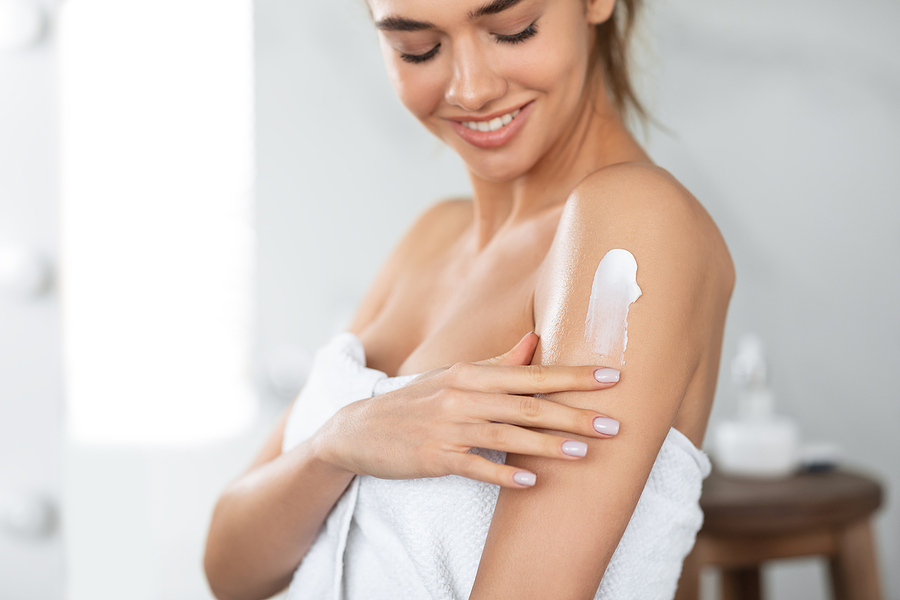Summer is the perfect time to enjoy a nice tan, but sometimes it comes with an unexpected side effect – post-tanning bumps and irritation. Whether you’re dealing with bumpy skin or uncomfortable rashes, these issues can be difficult to treat and even harder to prevent. Fortunately, there are natural remedies that can help soothe your skin and reduce inflammation caused by tanning.
From aloe Vera to oatmeal baths, continue reading to learn four of the best natural remedies for treating post-tanning rash and other skin irritations.

How to Treat Bumpy and Rough Skin After Tanning
If you’ve ever experienced rough and bumpy skin after tanning, you’re not alone. Tanning can cause a variety of skin problems, including skin bumps and a rash. This is because the intense heat and UV radiation from tanning can damage the skin’s natural barrier, leading to inflammation and irritation. This irritation can cause roughness and bumps on the skin, which can be uncomfortable and unsightly. Thankfully, with proper care and attention, you can enjoy a beautiful, healthy-looking tan without the negative side effects.
Options for Relieving and Healing a Rash Caused By Tanning
1. Aloe Vera: Aloe Vera is known for its healing properties and can help to soothe the skin after a tanning session. It has anti-inflammatory and antibacterial properties that can reduce redness, swelling, and irritation caused by UV exposure. Simply apply pure aloe Vera gel or juice directly to the affected area of your skin twice per day.
2. Oatmeal Baths: An oatmeal bath is another great natural remedy for post-tanning irritation. The oats contain compounds called avenanthramides which have anti-inflammatory and antioxidant properties that help reduce itching and inflammation caused by sunburns. Add one cup of colloidal oatmeal (finely ground) to a warm bath and soak for 10-15 minutes.
3. Apple Cider Vinegar: Another home remedy that can help reduce itching, redness, and inflammation caused by tanning is apple cider vinegar (ACV). It has anti-fungal and antibacterial properties that help to disinfect the skin while calming irritation caused by UV exposure. Simply mix one tablespoon of ACV in one cup of water and apply directly to the affected area with a cotton pad twice per day.
4. Coconut Oil: Coconut oil contains lauric acid which is known for its anti-inflammatory properties and can help soothe burns and rashes. It also helps lock in moisture to keep your skin hydrated after a long day in the sun. Simply apply coconut oil directly to the affected area twice per day.
After Tanning Skin Care is Essential to a Lasting Glow
With the right natural remedies, you can keep your skin healthy and irritation-free all summer long! Remember that prevention is key when it comes to treating post-tanning bumps and irritation. Always wear sunscreen with SPF of 30 or higher when going out in the sun for prolonged periods of time. It’s also important to take regular breaks from tanning, both indoors and outdoors, to give your skin a chance to recover. By following these simple tips, you can enjoy a beautiful summer tan without worrying about uncomfortable rash or bumpy skin.
Are you searching for a nearby tanning salon that provides top-quality tanning beds and products? Contact Broad Ripple Tans at 317-257-8262 to get the best deals on tanning beds, spray tanning, tanning products, and more! We also offer coupons!
Related Posts:
The Ultimate Guide to Indoor Tanning: Tips, Advice and Safety
How to Treat Tanning Bed Burns at Home
How to Treat a Tanning Bed Rash

